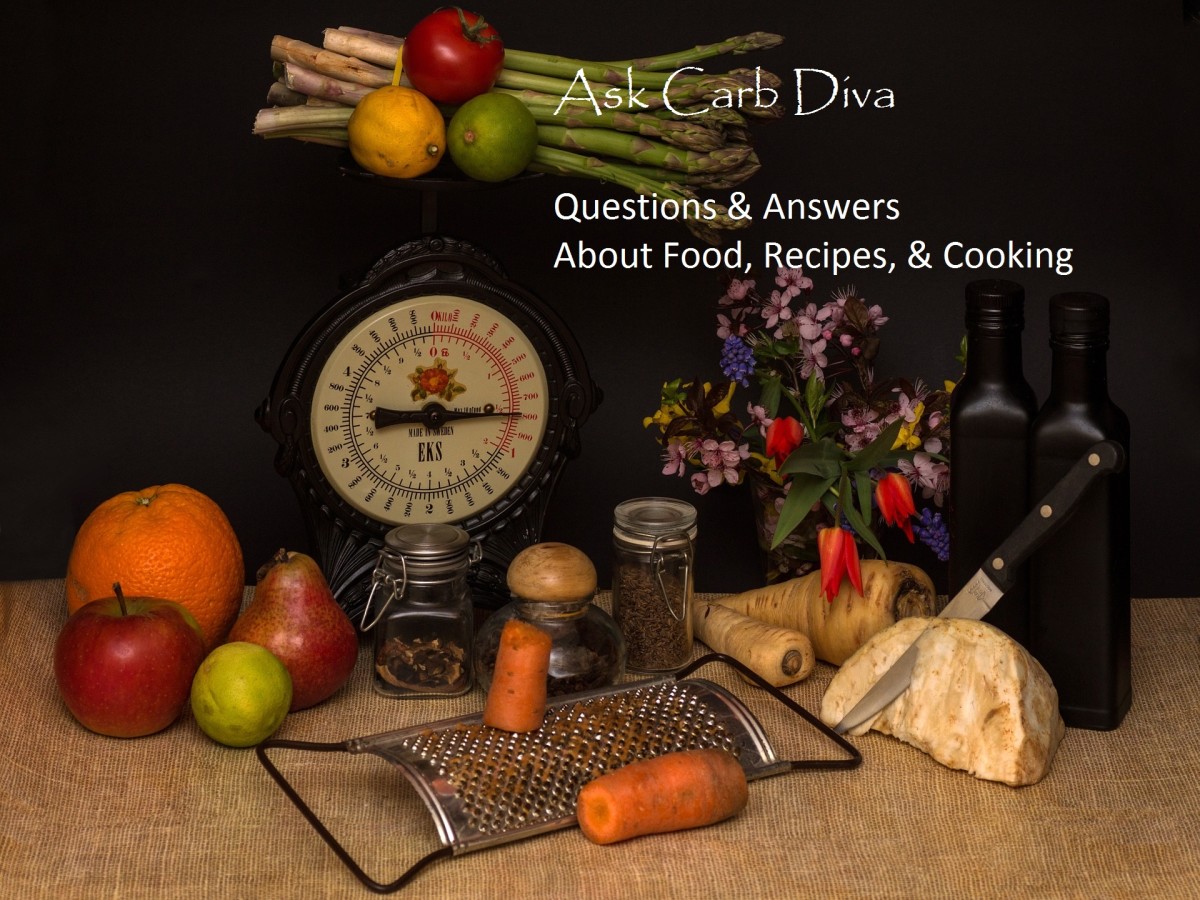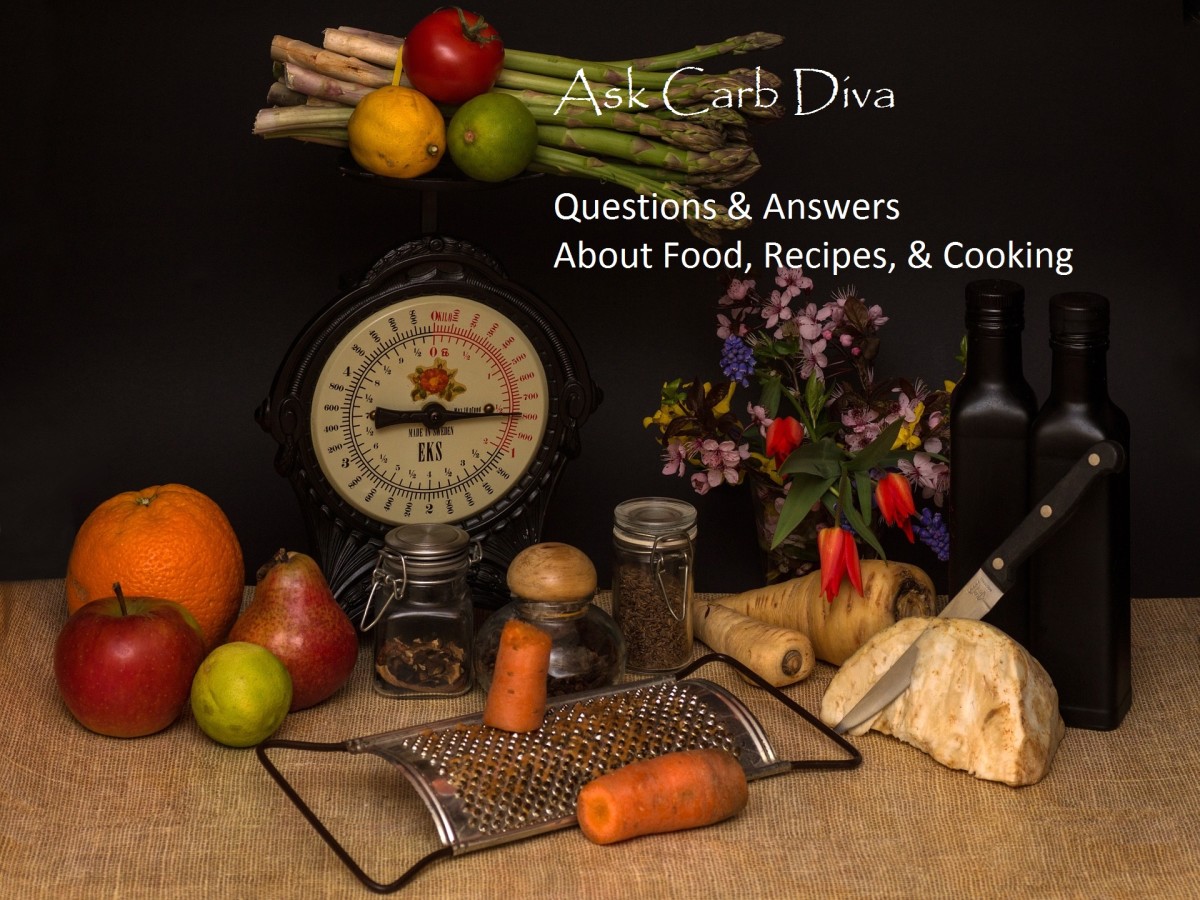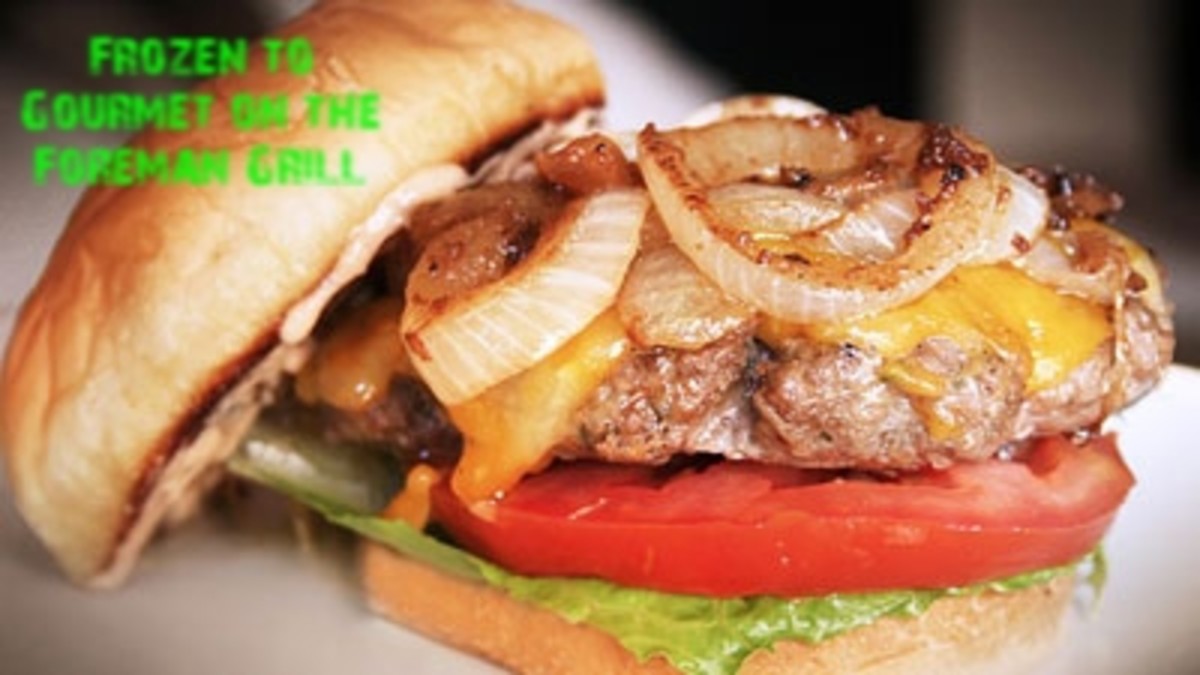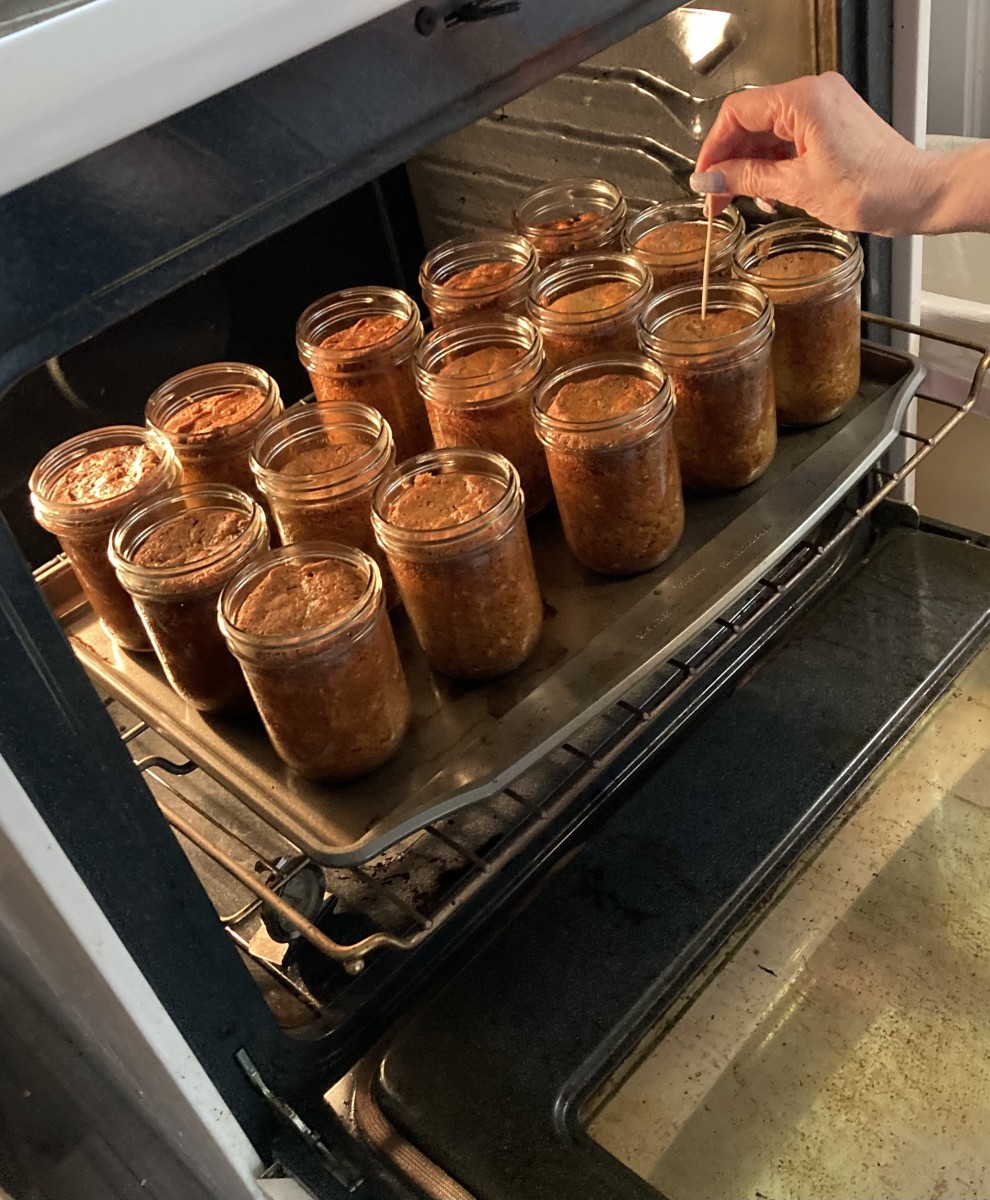Ask Carb Diva: Questions & Answers About Foods, Recipes & Cooking, #18

Easy Lifting
If you are new to this series, let me quickly explain how it works. If you have cooking questions I have cooking answers. Is there a cooking term that puzzles you or a technique you don't understand? Perhaps you need help finding the recipe for a specific type of food or dietary need. Leave your queries in the comments section below and next Monday, in Installment #19, I will have an answer for you. I promise.
The mailbox was not stuffed this week. (Perhaps you were all busy preparing for Super Bowl Sunday.) Next year at the Carb Diva house, we'll be serving our traditional homemade chili and chowder. It's an annual event; I'm sorry you missed us yesterday. Maybe you can pencil us in for next year.
Here are the questions that showed up this past week:
Does The Use Of Chopsticks Pre-Date the Western Use of Knife And Fork?
Perhaps you can tell me about the Chinese and Japanese traditions. How they came to use the chopsticks and not our western habits. Maybe their history is richer.
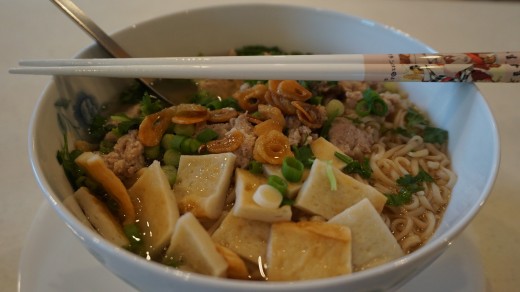
Manatita, typically when we think of Ancient China we imagine the invention of the compass, the development of papermaking, the cultivation of silkworms, the making of gunpowder (and fireworks). And we assume that chopsticks have always been employed for cooking and eating, right? Wrong.
Q. Edward Wang conducted extensive research for his book “Chopsticks: A Cultural and Culinary History”, and tells us that chopsticks were not always used by Asian cultures. Spoons (or spoon-like utensils fashioned from shells or skull bones) have been in existence since Paleolithic time, even in Asia.
There were plenty of reasons for the spoon’s primacy, but the most important one was that from antiquity to about the tenth century, millet was the dominant grain cereal in North China, Korea and parts of Japan. Millet was, and is, best cooked into porridge or gruel, for its grain size is smaller than rice. If millet were to be prepared like rice–brought to boil by applying high heat to the right amount of water, and then simmered over low heat until soft and fluffy—the millet grains on the bottom of the pot would burn while those in the middle would remain undercooked. As millet porridge was most common, the spoon became the most convenient tool because it helped one to eat the food elegantly. Because grain food was, and is today, the most important part in a meal, the tool that transports it best also gains its primacy.
In the 1st century, A.D. wheat began to grow (no pun intended) in appeal. Millstones had been developed so that wheat could be ground into flour; would noodles and dumplings be far behind? And then, there was the advent of rice—not the fluffy singular grains we enjoy in cabbage rolls but the sticky clumps we enjoy with teriyaki.
But what is the history of chopsticks? An archeological dig at the Anyang Yin ruins in China unveiled the earliest examples of Chinese writing, burial tombs, worship relics, jade ware, and even bronze sets of chopsticks, dated more than 3,300 years old, but these were most likely used for cooking (ladles and spatulas came eons later).
A population boom around 400 A.D. forced cooks to develop different methods of cooking. Food chopped into small, bite-sized pieces could be cooked more quickly (stir fry?) and also achieve a more frugal distribution of costly proteins. And then, there was Confucius. He eschewed any suggestion of violence and believed that sharp utensils should not be present at the dinner table.
The honorable and upright man keeps well away from both the slaughterhouse and the kitchen. And he allows no knives on his table.
— ConfuciusLexicon of Cooking Terms
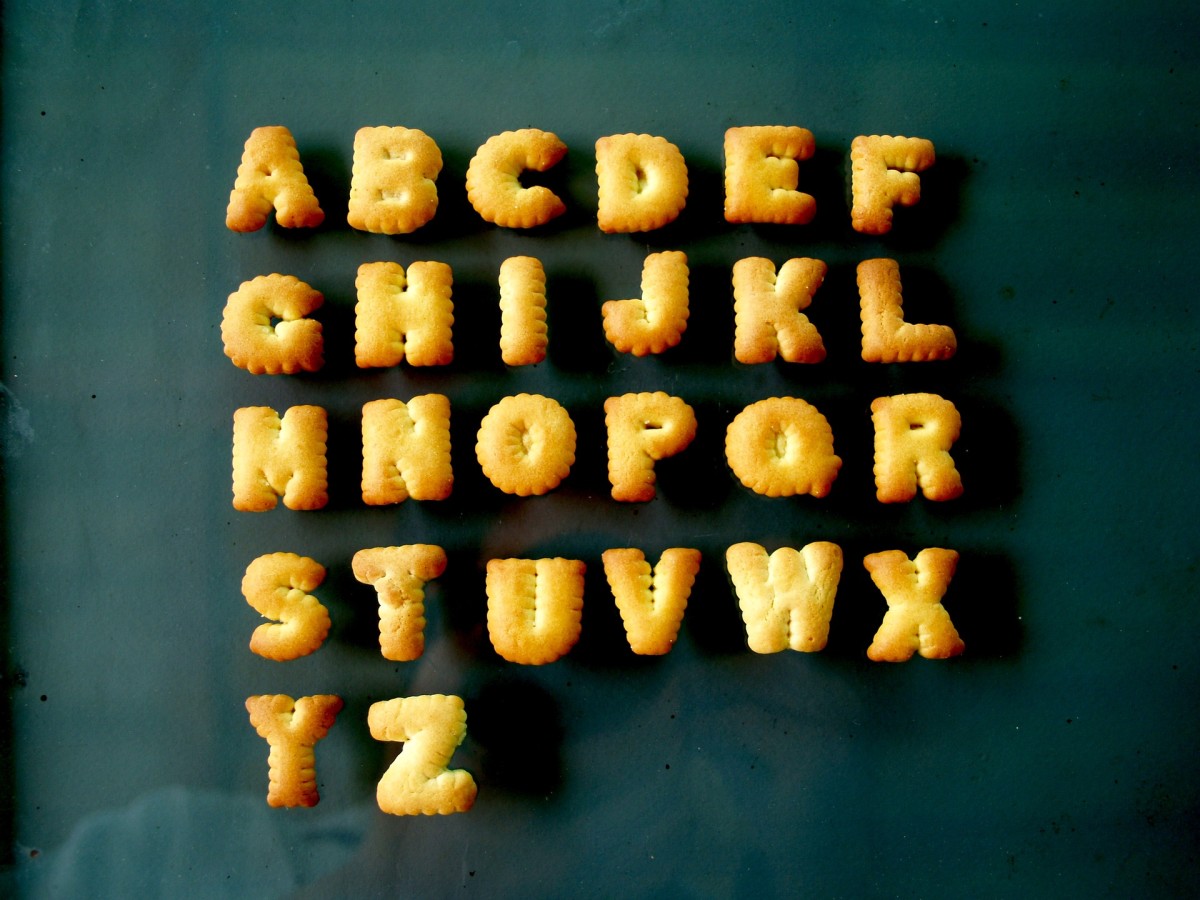
Continuing with our alphabetical list of obscure cooking terms:
Ganache – a very rich chocolate filling or thick glaze made with chocolate, shortening, and cream used for filling and frosting.
Glace - A stock that has been reduced to a syrupy consistency and used to add flavor and color to a sauce.
Gluten - A protein found in wheat and other cereal flours that forms the structure of the bread dough. It holds the carbon dioxide produced by the yeast and expands during fermentation. Gluten is developed when flour is combined with water and liquids, mixed, and kneaded. It provides the elasticity and stretch in bread dough.
Gratinéed - This means “with a browned crust of breadcrumbs and grated cheese.” You may have heard of gratin potatoes or gratinéed tomatoes.
Herb bouquet – This is a little bundle of herbs, tied together or placed together in a piece of cheesecloth, used to enhance the flavor of a soup or stew. The classic combination of herbs is parsley, thyme, and bay leaf.
Herbs de Provence – a mixture of dried herbs commonly containing basil, marjoram, rosemary, savory, lavender, thyme, and fennel seeds.
The Condiment of Choice for French Fries: Is It a Regional Thing?
Although I will never opt for vinegar on my fries, I'll stick with ketchup or like the Belgians mayo.
There's another question for you. French fries and which sauce are acceptable? Did Americans first put ketchup on their fries?
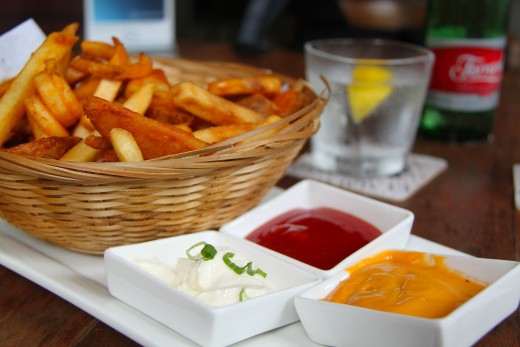
Mary, according to Google, a bottle of ketchup can be found in 97 percent of U.S. homes. No one really knows when the marriage of ketchup and fries was consummated, but ketchup has been a popular condiment for more than 200 years.
As you know, once upon a time potatoes grew only in the Americas. Then one day Columbus was looking for a new spice route and stumbled upon our shores by mistake. He took a few of those spuds home, and the rest is history. Potatoes are everywhere, and we love them fried.
Belgium (not France) is thought to be the birthplace of those pome frites where they're served in cardboard cones with not only mayonnaise (as you mentioned), but also, green goddess dressing, soy-peanut sauce, and even miso-mustard butter sauce. And in other parts of the world...
- Japan - flavored powders (seaweed, Italian seasoning, basil, etc.)
- The Philippines - banana ketchup
- Malaysia - chili sauce
- The UK - you mentioned malt vinegar, but HP sauce is also popular
- Australia and NZ - vinegar and chicken salt (yes you read that correctly)
- Denmark and France - Rémoulade
- Germany and Netherlands- mayonnaise
- Belgium - peanut cause, spicy ketchup or curry mayonnaise
- Bulgaria - Sirene (a cheese similar to feta)
- Romania - mujdei (spicy sauce of minced garlic, salt, oil, and vinegar)
- Puerto Rico and Argentina - Russian dressing (a mix of ketchup and mayonnaise)
- Canada - beef gravy and cheese curds (poutine, my favorite)
I worked with someone who dunked fries in yellow mustard, and Mr. Carb Diva always askes for tartar sauce. I guess this proves that "anything goes."
Do I Need a Wire Whisk?
There are about 1 million kitchen tools and gadgets. I understand bowls, knives, and cutting boards. Spoons and rubber spatulas make sense, but do I really need a wire whisk or is that just for fancy cooking?
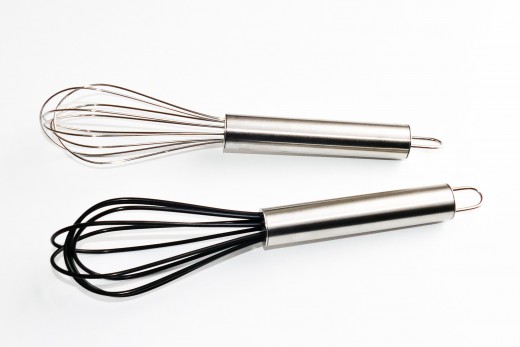
This low-tech tool could be the hero in your kitchen. Believe me, it does a LOT more than simply whip egg whites (but knowing how to do that is important, and doing it the right way is pretty cool). In addition to turning a puddle of egg whites into a billowy cloud of meringue, a whisk can be used to:
- Remove the lumps from brown sugar
- make the best scrambled eggs in the world
- create your own mayonnaise (trust me, you'll never want the stuff from a jar again)
- blend the dry ingredients for bread, cakes, and cookies
- make whipped cream
- prepare smooth, lump-free gravy and sauces
- blend salad dressings
So the short answer is yes, you really should purchase at least one wire whisk. It will make your life in the kitchen so much easier.
That's All Folks!

I hope all of you have a great week. Keep those cards and letters coming in. And remember, if you don't want others to know "who asked that question" you can always email me at lindalum52@gmail.com.
© 2018 Linda Lum


